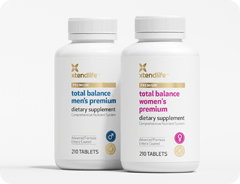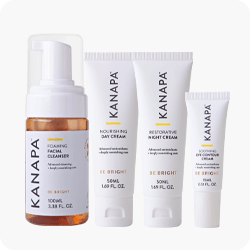In the United States and many Western countries, it’s been long believed that vitamin C can protect against the common cold, leading many of us to not only load up on vitamin C supplements, but also to boost our daily citrus intake. But according to researchers, it’s possible to get too much of a good thing.
While vitamin C from food is okay at any level – excess levels of the water-soluble vitamin aren’t stored and are sent packing through urine. When taking supplements, it’s a different story.
“Unlike the vitamin C naturally present in foods like orange juice, vitamin C as a supplement is not an antioxidant,” said Dr. Victor Herbert of Mount Sanai School of Medicine in New York in an interview with the New York Times. “It's a redox agent -- an antioxidant in some circumstances and a pro-oxidant in others.” (Ref. 1)
An earlier Canadian study echoed those results, but many still believe that high doses of vitamin C are not dangerous, based on research from decades before.
A 1940s miracle “drug”
In the 1940s, North Carolina doctor Frederick Robert Klenner, M.D, believed that large doses of vitamin C – as much as 6,000 to 20,000 milligrams a day - could cure everything from pneumonia, measles and chicken pox to polio and multiple sclerosis.
His 1948 paper, Virus Pneumonia and Its Treatment with Vitamin C, published in the Journal of Southern Medicine and Surgery, was the first of numerous scientific publications addressing vitamin C, all written from his tiny office in a small town just south of the Virginia border. (Ref. 2)
Klenner administered doses of Vitamin C by injection, and made claims that in high doses it could cure Rocky Mountain Spotted Fever, bladder infections, alcoholism, arthritis, leukemia, atherosclerosis, ruptured intervertebral discs, high cholesterol, corneal ulcer, diabetes, glaucoma, burns and secondary infections, heat stroke, radiation burns, heavy metal poisoning, chronic fatigue, and complications resulting from surgery, as well as tetanus and venomous spider and snake bites.
While two-time Nobel Prize winner Dr. Linus Pauling also touted Vitamin C as a cure for ills, his were less far-fetched than Klenner’s, although he did make mention of Klenner’s extensive work on the subject.
“The early papers by Dr. Fred R. Klenner provide much information about the use of large doses of vitamin C in preventing and treating many diseases. These papers are still important,” he said in the 1970s.
As for Pauling himself, he recommended 1,000 milligrams of vitamin C a day to reduce the instance of the common cold by as much as 25 percent, although he himself took at least 12,000 milligrams a day, and hiked that to 40,000 milligrams if he felt any signs of sickness. (Ref. 3)
Backing to the claims?
It turns out that Klenner – who administered vitamin C by injection – might have been on to something, even though his peers viewed him as something of a quack.
In 2010, a New Zealand farmer stricken with swine flu after a vacation in Fiji nearly died when he developed viral pneumonia, and ended up on life support.
Doctors asked his family to allow the farmer, Allan Smith, to die, but they asked physicians to try one more thing – high doses of vitamin C administered by IV.
Skeptical doctors gave Smith 25 grams in the morning and 25 grams at night, and his condition immediately improved, although he wavered between improvement and regression as new doctors debated the benefits of the vitamin. Eventually, though, Smith was discharged from the hospital, and intravenous vitamin C was given the credit.
“What you saw that happened to Allan Smith happens on a regular basis,” said New Zealand’s Dr. Robert Levy, author of “Curing the Incurable: Vitamin C, Infectious Diseases, and Toxins.”
“I know for a fact by personally using vitamin C and giving it to my patients and discussions with hundreds of other doctors,” he added. (Ref. 4)
IV vs. oral is key
While there are many cases of mega doses of vitamin C being attributed to curing illness, most experts would point out the dangers of such high doses of ascorbic acid when taken orally.
According to the Mayo Clinic, high doses of vitamin C can cause a wide range of unpleasant problems including kidney stones, diarrhea, bloating and cramps, nausea and vomiting, heartburn, headaches and insomnia, as well as oxidation that can trigger unwelcome inflammation.
Because it is taken orally, our Total Balance formulas contain far less than the 500 milligrams, considered at the high end of the safety scale - 194 milligrams in the case of our Total Balance Unisex formula – to prevent triggering oxidation that could lead to signs of aging. It is important to note that we do not use ascorbic acid. Instead we use Calcium Ascorbate and Ascorbyl palmitate because they have greater fat soluble and anti-oxidant properties.
While higher doses are acceptable for a short time if you develop a cold, in general, when it comes to vitamin C, lower doses, and having the best forms are better when taking it in supplement form.
What do you think about Smith’s story? Would you turn to alternative medicine in an emergency?
References:
- www.nytimes.com/1998/04/09/us/taking-too-much-vitamin-c-can-be-dangerous-study-finds.html
- www.doctoryourself.com/klennerbio.html
- www.quackwatch.com/01QuackeryRelatedTopics/pauling.html
- www.healthimpactnews.com/2013/vitamin-c-saves-man-dying-of-viral-pneumonia/
- www.mayoclinic.org/healthy-living/nutrition-and-healthy-eating/expert-answers/vitamin-c/faq-20058030


 Supplements
Supplements Bundles
Bundles









